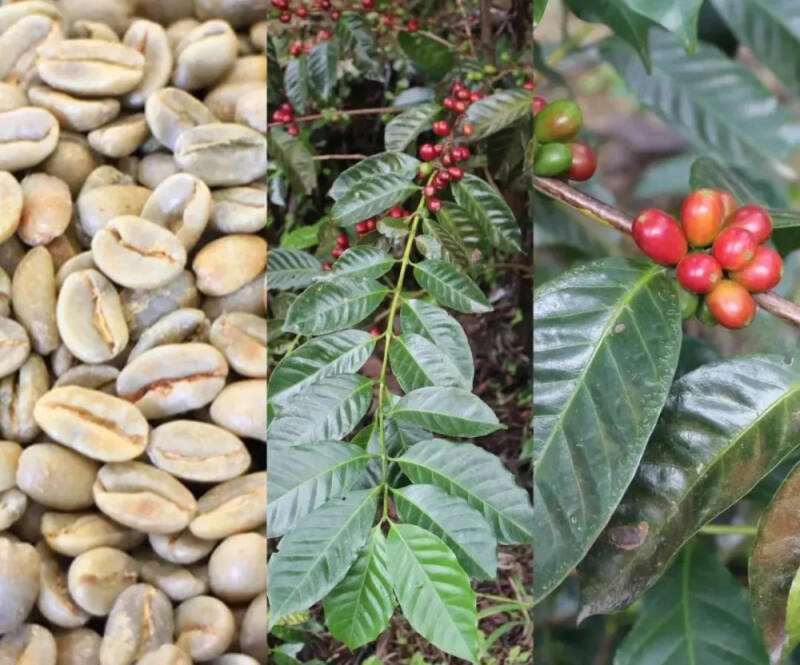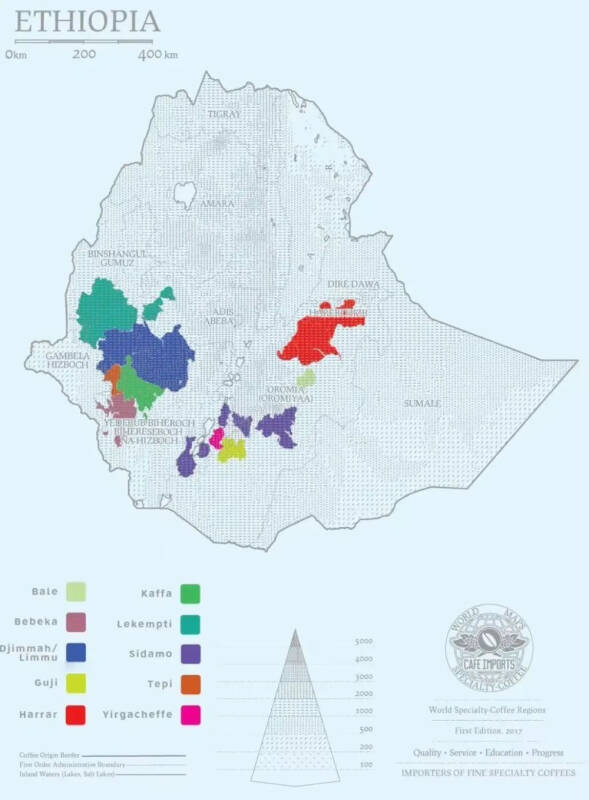Where is Guixia Village in Ethiopia? What are the characteristics of Guixia Village's Guixia Village?
Speaking of Rose Summer, everyone will think of Panama Rose Summer. At first, Rosa was not popular because of its fragile plants, difficult to grow and low yield. later, the emerald estate in BOP made the global market aware of the variety through best Panama (Panama) competitions and auctions, and then spread to the surrounding manors and neighboring countries.

In fact, the first rose summer came from Ethiopia, the recognized birthplace of coffee, and was discovered in the Gesha area near the Kaffa forest in southwestern Ethiopia in the 1930s, during which it was found in many countries because of its resistance to leaf rust, and then it was catalogued as a "geisha T2722" variety by the Costa Rican CATIE before finally coming to Panama.
As the rose variety became famous, it attracted many manors and other countries to introduce rose and plant it, including a director named Adam Overton and his photographer wife Rachel Samuel. But the couple, commissioned by the Ethiopian government to make a documentary about coffee, came to the Bench Maji region in 2007 and discovered the Gori Gesha Forest forest, when they came up with the idea of a coffee farm.
In 2009, the couple met Willem, the owner of the Panamanian mule farm, and returned to Ethiopia in a team to find Rosa's birthplace. They came to the place known as Gesha Village in Bench Maji and found the area most likely to be the original Rose Summer. After finding wild rose summer, seeds were collected from native rose summer trees, screened and planted in Rose Summer Village. Later, it was decided to build the manor here and named it Gesha Village Rose Summer Village Manor.
At present, Ethiopia is divided into 12 states, 2 autonomous administrative regions and 10 coffee producing areas, among which many world-famous coffee producing areas, such as Sidamo, Jima, Haller, Guji and Yirgacheffe, etc., among which Guji and Yegashafi originally belonged to Sidamo, and became an independent coffee producing area because of their unique flavor.

But when it comes to Ethiopian coffee, people often think of coffee-producing areas such as Sidamo, Guji and Yegashafi, but coffee was first found in the Kaffa Zone region of southwestern Ethiopia, where countless Arabica coffee mother trees still grow.
Today, the Kafa region is part of the southwestern people's State of Ethiopia (South West Ethiopia Peoples' Region, a former southern nation state that was separated by a referendum in 2021), in the north of the state. The Kafa area is mainly a humid and humid rainforest zone, the most famous of which is the Kafa Biosphere Reserve (Kafa Biosphere Reserve), which is rich in natural resources.
In the west of the Kafa Biosphere Reserve is the Banchimaji Bench Maji (known as Bench Sheko in some areas), which is also the Gesha National Forest Reserve, where the rose varieties originated, but in the division of coffee producing areas, Bench Maji belongs to the Bebeca producing area (Bebeka), which is also the capital of the Banchimagi region, and it is relatively remote and backward. Therefore, the coffee here is basically a very original way of forest cultivation.
However, the coffee beans originally marked with roses came from different local coffee trees, according to French biologist Jean-PierreLabouisse. Therefore, there is not only one kind of rose summer, there are many different "rose summer species" in Ethiopia, and Panama rose summer is just one of them.
Therefore, the rosy summer at the Rosa Village Manor in Banchimaji is not the same species as the Rose Summer in Panama. Rose summer village now grows rose summer 1931 (Gesha 1931) and Gori rose summer (Gori Gesha).
Rose summer 1931 is a native rose summer variety found by the owner of the rose summer village in the rose summer forest. it is named Rosa 1931 because it is very close to the Panamanian rose summer variety found in 1931. Gori Rose Summer is in 2011, after the establishment of Rosy Village Manor, the landowner found a bean that looks like Rose Summer in the Gori Forest, 12 miles away from the estate, so it was named Gori Rose Summer.
In addition, the Rosa Village Manor, in cooperation with the Ethiopian Research Centre, has developed an antibody-resistant coffee variety, Elu Gbagbo Illubabor Forest 1974, which was discovered in the Illubabor Forest in 1974, hence its name.
Qianjie Coffee also has Red Standard Rose Summer Coffee from Rose Village Manor. This rose summer belongs to the Gori Gesha variety, which is tanned and brewed with aromas of jasmine and ripe fruit. The entrance will have citrus, grape, wild ginger flavor, delicate fruit acidity, fruit-like sweet finish, clean and balanced taste.
For more information about coffee producing areas, please scan the code directly and follow: coffee comments.
Long press the QR code to follow:
Important Notice :
前街咖啡 FrontStreet Coffee has moved to new addredd:
FrontStreet Coffee Address: 315,Donghua East Road,GuangZhou
Tel:020 38364473
- Prev

Hurricane hits southern Mexico's coffee producing areas! 16 people have been killed
According to local media reports in Mexico, Hurricane "John" made landfall in Mexico on the evening of the 23rd, having serious impacts on many places in Mexico, mainly affecting southern Mexico. According to a report issued by the local government of Guerrero, Guerrero, southwestern Mexico, on the 27th, Hurricane "John" made landfall in Gray on the day of its landing
- Next

Just drop it! Guilin's first Starbucks suddenly closed!
▲ Click to pay attention| Daily Boutique Coffee Culture Magazine Coffee Factory Recently, netizens in Guilin posted that the first local Starbucks closed without warning. According to the poster, Guilin Dream Island Starbucks opened in October 2014 and is the first Starbucks store in the city. Because the store is located in an important local town
Related
- What effect does Italian American coffee with filter paper have? Will coffee taste better if it is put on filter paper at the bottom of the powder bowl?
- What is the color difference in coffee beans? What are the characteristics of honey processed coffee beans? Why are the anaerobically treated coffee beans uneven in color?
- How does novice Xiaobai quickly get started and make coffee? Newbies learn to make coffee by hand and share the specific steps and process process!
- Costa tea has a shelf life of 100 years?! Expert: Unable to verify
- It's a huge uproar! American milk addition was rejected by Manner employees?!
- Mocha pot coffee bean recommendations| How fine and how much powder should be used for grinding? What parameter ratios do I need to use to make milk with Mocha pot coffee?
- What are the characteristics of the world's top ten coffee beans treated with Costa Rica honey? How to make black honey kadura from Tarazhu Pilon Processing Plant taste good?
- How to make deep-roasted coffee? What grinding water temperature does authentic Jamaica Blue Mountain No. 1 coffee use to brew it well?
- Selected high-grade rose summer coffee flavor tasting guide Why Panama rose summer has the aroma of flowers and fruits
- What equipment does a novice Xiaobai need to buy to learn to make coffee? Filter cup electronic scale bean grinder manual flushing pot purchase guide

